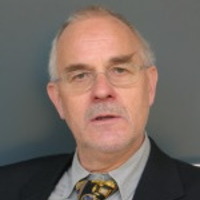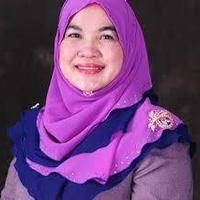Papers by Marzena Grzesiak

E-mentor, 2024
This paper critically assesses Business Process Management (BPM) education in Poland and provides... more This paper critically assesses Business Process Management (BPM) education in Poland and provides evidence-based recommendations for improvement. Through a survey of 44 BPM educators, the study evaluates BPM lifecycle coverage, IT tool utilization, and incorporation of the Six Core Elements of BPM. The findings reveal a focus on process modeling and analysis, identifying gaps in the way the entire BPM lifecycle is addressed. Despite the utilization of various IT tools, there is a notable absence of coverage for emerging topics such as process mining, AI, and Robotic Process Automation. Only 12% of courses cover all Six Core Elements of BPM, and there is a critical gap in student education, which is the underrepresentation of the People and Culture elements. The paper concludes with a manifesto for greater alignment between academic education and industry needs through comprehensive BPM curricula, dedicated software tools, and more robust coverage of the strategic and governance aspects of BPM. This will bridge the gap between academic education and real-world BPM applications, so that graduates can be better prepared for the challenges of the modern business landscape, which can enhance the quality and effectiveness of BPM education, thereby aligning it with the evolving demands of the business environment and contributing to the growth and competitiveness of organizations in Poland.

E-Mentor, May 1, 2024
This paper critically assesses Business Process Management (BPM) education in Poland and provides... more This paper critically assesses Business Process Management (BPM) education in Poland and provides evidence-based recommendations for improvement. Through a survey of 44 BPM educators, the study evaluates BPM lifecycle coverage, IT tool utilization, and incorporation of the Six Core Elements of BPM. The findings reveal a focus on process modeling and analysis, identifying gaps in the way the entire BPM lifecycle is addressed. Despite the utilization of various IT tools, there is a notable absence of coverage for emerging topics such as process mining, AI, and Robotic Process Automation. Only 12% of courses cover all Six Core Elements of BPM, and there is a critical gap in student education, which is the underrepresentation of the People and Culture elements. The paper concludes with a manifesto for greater alignment between academic education and industry needs through comprehensive BPM curricula, dedicated software tools, and more robust coverage of the strategic and governance aspects of BPM. This will bridge the gap between academic education and real-world BPM applications, so that graduates can be better prepared for the challenges of the modern business landscape, which can enhance the quality and effectiveness of BPM education, thereby aligning it with the evolving demands of the business environment and contributing to the growth and competitiveness of organizations in Poland.
DOAJ: Directory of Open Access Journals - DOAJ, Jul 1, 2012
DOAJ: Directory of Open Access Journals - DOAJ, Apr 1, 2013
DOAJ: Directory of Open Access Journals - DOAJ, Oct 1, 2012
Politechnika Gdańska, 2020

Contemporary Issues in Business, Management and Education ‘2012. Selected papers, 2012
Small and medium-sized enterprises are the backbone of the economy in the Baltic Sea Region, also... more Small and medium-sized enterprises are the backbone of the economy in the Baltic Sea Region, also creating most new jobs and registering most new patents. To stay competitive, the companies must exploit their innovation potential. This asks for a stronger cooperation between the businesses and the research organisations, which can be achieved through so called “Centers of Excellence”. Starting from the 90's in Europe, many centers of excellence (CoE) and disciplines have been created practically in all areas. Although the concept of a center of excellence is often used, it is still rather ambiguous. Each organization could be recognized as a “center of excellence” as long as it attracts and comprises various parties such as researchers, enterprises, research units. The paper provides the concept of centers of excellence and its basic prerequisites to perform. It also briefly elaborates on a recent study showing which sectors or industries could be core areas for suchs centers and highlight concrete possible measures that can be realized in such centers.
The Quick IGA project supports the development of working and organizational structures in SMEs i... more The Quick IGA project supports the development of working and organizational structures in SMEs in order to increase the employment rate of women and elderly and concurrently increases innovation capacities. One of the main project’s tasks was to find best practices from SMEs in Nordic countries in that field (in the first step) and identify (in second step) possibilities and conditions of their implementation in SMEs in other Baltic counties (e.g. Poland, Latvia, Lithuania, Germany). The main aim of this article is to present the results of the project: determinants of chosen practices’ implementation (those focused on prolonging the older persons’ professional activity in Poland, Germany, Lithuania and Latvia).

Opisano kontekst i cele projektu Innovative Business Transfer Models for SMEs in the BSR (INBETS ... more Opisano kontekst i cele projektu Innovative Business Transfer Models for SMEs in the BSR (INBETS BSR) wspolfinansowanego z Europejskiego Funduszu Rozwoju Regionalnego w ramach Programu Regionu Morza Baltyckiego w latach 2014-2020. W projekt zaangazowanych jest czternastu partnerow z regionu Morza Baltyckiego: Danii, Estonii, Finlandii, Litwy, Łotwy, Niemiec, Polski, Rosji i Szwecji. Role lidera projektu pelni Baltic Sea Academy Baltic Sea Academy e.V. Ze wzgledu na swoj potencjal Politechnika Gdanska (Wydzial zarządzania i Ekonomii) pelni w projekcie funkcje partnera naukowego, podobnie jak: International Business Academy z Danii, Lithuanian University of Educational Sciences z Litwy, Satakunta University of Applied Sciences z Finlandii oraz University of Skovde ze Szwecji. Glownym zadaniem Politechniki Gdanskiej (zespolu projektowego) w projekcie jest opracowanie szczegolowych programow (blue prints) transferu biznesu, opartych na sześciu - zidentyfikowanych wcześniej - modelach. Z...
Kwestie ksztalcenia ustawicznego i dostosowania kwalifikacji do potrzeb rynku pracy są przedmiote... more Kwestie ksztalcenia ustawicznego i dostosowania kwalifikacji do potrzeb rynku pracy są przedmiotem dyskusji zarowno na szczeblu europejskim, jak i poszczegolnych krajow. Dzialania administracji powinny zmierzac w kierunku określenia zapotrzebowania na określone umiejetności oraz aktywizacji spoleczenstwa poprzez realizacje idei uczenia sie przez cale zycie. Doświadczenia krajow skandynawskich dostarczają wielu przykladow dobrych praktyk w tym obszarze. Nie nalezy jednak spodziewac sie rezultatow w krotkim czasie.

Innowacyjnośc malych i średnich przedsiebiorstw (MSP) oraz wykorzystywane przez nie technologie i... more Innowacyjnośc malych i średnich przedsiebiorstw (MSP) oraz wykorzystywane przez nie technologie informacyjne czesto warunkują konkurencyjnośc nie tylko samych przedsiebiorstw, ale takze calych gospodarek. Jednak innowacyjnośc przedsiebiorstw w duzym stopniu uzalezniona jest od świadomości menedzerow dotyczącej potrzeby wprowadzania innowacji. Wprowadzane technologie informacyjne stanowią czesto pierwszy krok do implementacji innowacyjnych rozwiązan w obszarze zarządzania umozliwiających, miedzy innymi, rozwoj przedsiebiorstwa. Przemysl okretowy zmaga sie w Polsce od lat z określonymi problemami wynikającymi tak z sytuacji makroekonomicznej, jak i pewnych nawykow zarządzania. Trudna sytuacja w branzy ma wplyw takze na kondycje MSP kooperujących z przemyslem okretowym. W ramach projektu MAYDAY przeprowadzono wśrod tych przedsiebiorstw dwie tury badan, ktore mają - miedzy innymi - umozliwic określenie zakresu stosowania technologii informacyjnych oraz zainteresowanie innowacjami. W roz...

This expertise describes the possibilities of best practices implementation. These examples of be... more This expertise describes the possibilities of best practices implementation. These examples of best practices concern to improve the women’ entrepreneurship and were identified at the earlier stage of the project. One of the areas of activity within the QUICK IGA project was the selection of best practices related to strengthening the economic activity of women in the context of developing the competitiveness and innovation of SMEs. Due to the Scandinavian enterprises' considerable experience in this area, the best practices were sought among them with view to possible future implementation in the remaining BSR countries, mainly in Lithuania, Latvia, Germany and Poland. A comprehensive analysis of the solutions used mainly by Scandinavian companies and public organizations to combine the economic activity of women, as well as complex consultations with other partners of the project, allowed GUT to select 6 related to women's activity. It this expertise are presented transfer...










Uploads
Papers by Marzena Grzesiak